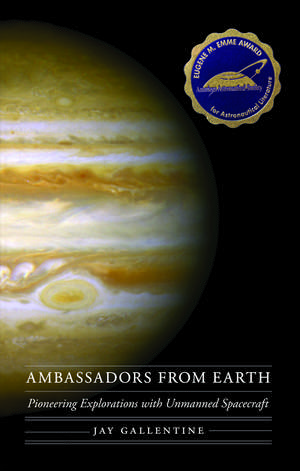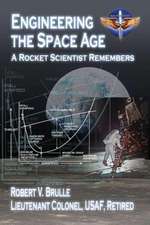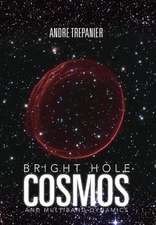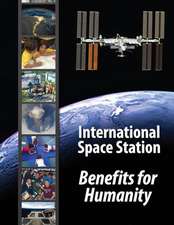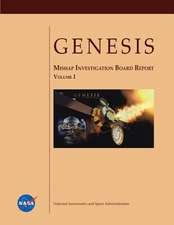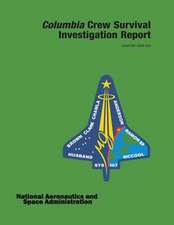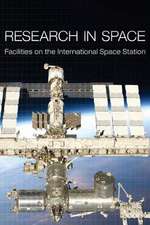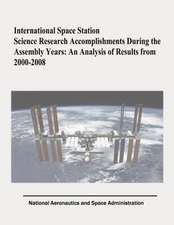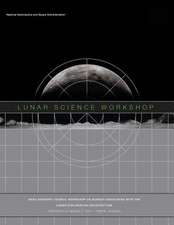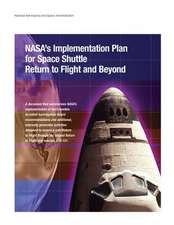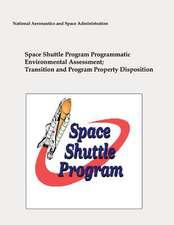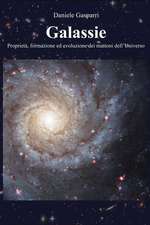Ambassadors from Earth: Pioneering Explorations with Unmanned Spacecraft: Outward Odyssey: A People's History of Spaceflight
Autor Jay Gallentineen Limba Engleză Paperback – iun 2014
Drawing on original interviews with key players and bolstered by previously unpublished photographs, journal excerpts, and primary source documents, Jay Gallentine delivers a quirky and unforgettable look at the lives and legacy of the people who conceived, built, and guided our first unmanned spacecraft and planetary probes. From the Sputnik and Explorer satellites of the late 1950s, to the thrilling Voyager “Grand Tour” of the ’70s and ’80s, they yielded some of the most celebrated successes and spectacular failures of the space age.
Confessed one participant, “We were making it up as we went along.”
Gallentine fearlessly clambers to the bottom of a surprisingly bitter controversy over who first developed the technique of using gravity to steer a spacecraft. Also of special note are his candid discussions with James Van Allen, the discoverer of the rings of planetary radiation that now bear his name.
Din seria Outward Odyssey: A People's History of Spaceflight
-
 Preț: 135.68 lei
Preț: 135.68 lei -
 Preț: 230.94 lei
Preț: 230.94 lei -
 Preț: 140.41 lei
Preț: 140.41 lei -
 Preț: 152.17 lei
Preț: 152.17 lei -
 Preț: 175.07 lei
Preț: 175.07 lei -
 Preț: 125.95 lei
Preț: 125.95 lei -
 Preț: 162.90 lei
Preț: 162.90 lei -
 Preț: 151.58 lei
Preț: 151.58 lei -
 Preț: 129.09 lei
Preț: 129.09 lei -
 Preț: 229.19 lei
Preț: 229.19 lei -
 Preț: 223.02 lei
Preț: 223.02 lei -
 Preț: 161.26 lei
Preț: 161.26 lei -
 Preț: 300.89 lei
Preț: 300.89 lei -
 Preț: 172.17 lei
Preț: 172.17 lei -
 Preț: 195.33 lei
Preț: 195.33 lei -
 Preț: 162.71 lei
Preț: 162.71 lei -
 Preț: 222.15 lei
Preț: 222.15 lei -
 Preț: 224.33 lei
Preț: 224.33 lei -
 Preț: 160.63 lei
Preț: 160.63 lei -
 Preț: 160.63 lei
Preț: 160.63 lei -
 Preț: 205.45 lei
Preț: 205.45 lei -
 Preț: 146.58 lei
Preț: 146.58 lei -
 Preț: 237.25 lei
Preț: 237.25 lei
Preț: 151.35 lei
Nou
Puncte Express: 227
Preț estimativ în valută:
28.96€ • 30.06$ • 24.21£
28.96€ • 30.06$ • 24.21£
Carte disponibilă
Livrare economică 24 februarie-10 martie
Preluare comenzi: 021 569.72.76
Specificații
ISBN-13: 9780803249233
ISBN-10: 0803249233
Pagini: 520
Ilustrații: 49 photographs, 1 illustration
Dimensiuni: 152 x 229 x 33 mm
Greutate: 0.73 kg
Editura: Nebraska Paperback
Colecția University of Nebraska Press
Seria Outward Odyssey: A People's History of Spaceflight
Locul publicării:United States
ISBN-10: 0803249233
Pagini: 520
Ilustrații: 49 photographs, 1 illustration
Dimensiuni: 152 x 229 x 33 mm
Greutate: 0.73 kg
Editura: Nebraska Paperback
Colecția University of Nebraska Press
Seria Outward Odyssey: A People's History of Spaceflight
Locul publicării:United States
Notă biografică
Jay Gallentine is a space historian who strives to tell never-before-heard stories of the space age in a lightheartedly appealing, readable, and nontechnical style.
Cuprins
List of Illustrations
Acknowledgments
Introduction
1. Aboard the Glacier
2. Problem Child
3. The Convict
4. Light Fuse, GET AWAY
5. New Moon
6. Let's Make a Deal
7. The Creators and the Makers
8. Storming the Sea of Dreams
9. Moving at the Speed of Design
10. Job Number MA-11
11. The Science and the Cyclist
12. Get Off the Bus
13. Swing in Time
14. The Meeting and the Mechta
15. Think Like Gravity
16. Didn't They Get It?
17. The Death and the Funeral
18. One Hundred Percent Failure
19. Three-Problem Shipley
20. Pete and Al's Little Field Trip
21. Irradiated Plans
22. Embarking
23. Get It
24. Instant Science
25. Circles of Gold
26. Last Light
27. Continuum
Sources
Index
Acknowledgments
Introduction
1. Aboard the Glacier
2. Problem Child
3. The Convict
4. Light Fuse, GET AWAY
5. New Moon
6. Let's Make a Deal
7. The Creators and the Makers
8. Storming the Sea of Dreams
9. Moving at the Speed of Design
10. Job Number MA-11
11. The Science and the Cyclist
12. Get Off the Bus
13. Swing in Time
14. The Meeting and the Mechta
15. Think Like Gravity
16. Didn't They Get It?
17. The Death and the Funeral
18. One Hundred Percent Failure
19. Three-Problem Shipley
20. Pete and Al's Little Field Trip
21. Irradiated Plans
22. Embarking
23. Get It
24. Instant Science
25. Circles of Gold
26. Last Light
27. Continuum
Sources
Index
Recenzii
"Many space buffs, especially young ones, should find this a satisfying narrative."—Publishers Weekly
"Ambassadors is written in an accessible and engaging style, introducing readers to behind-the-scenes players most of us have never heard of."—Russell Lewis, NPR
"[Ambassadors from Earth] offers an accessible account of the U.S. and Soviet planetary missions of the Space Race era, as well as the more widespread efforts of more recent times."—Roger Launius, Air & Space Magazine
"Utilising original interviews with key players, bolstered by never-before-seen photographs, journal excerpts, and primary source documents, Gallentine delivers a quirky and unforgettable look at the lives and legacy of the Americans and Soviets who conceived, built, and guided those unmanned missions to the planets and beyond."—Philip Corneille, Spaceflight
"This book provides a wonderful way of renewing interest in the pioneering contributions of the robotic space programs pursued by the United States and the Soviet Union."—De Witt Douglas Kilgore, Quest
"An intriguing and essential read on the history of unmanned space programs and especially the tug-of-war between the United States and the Soviety Union for space supremacy in the late 1950s and the decade of the 1960s."—Dale A. Stirling, Journal for the History of Discoveries
